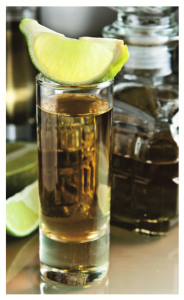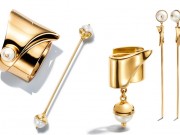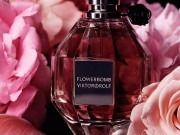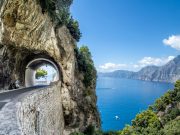A LOT OF US CRINGE WHEN WE THINK OF TEQUILA; IT BRINGS US BACK TO THAT BAD EVENING WHEN WE WERE MUCH YOUNGER THAT WE WANT TO FORGET. IT IS UNFORTUNATE THAT THIS MEXICAN ELIXIR TENDS TO BRING UP UNFORTUNATE MEMORIES OF OUR YOUTH FOR MANY OF US, BUT IT IS OUR YOUTHFUL MALPRACTICE OF THIS DRINK, AND NOT THE DRINK ITSELF, THAT IS AT FAULT.
Tequila often gets a hard time because most of our exposure when we were young was through the bulk brands, either in the form of a semblance of a margarita (see gaudy glass dipped in  salt) or the straight up, in a shot glass, proceeded by salt on the wrist, followed by a lime wedge.
salt) or the straight up, in a shot glass, proceeded by salt on the wrist, followed by a lime wedge.
We no longer need to think about tequila as the hangover-inducing swill. Mexico’s signature spirit has grown up into a drink savoured by connoisseurs worldwide. Today’s tequila story starts with an offering of hundreds of high-grade, 100 percent blue-agave (the best quality), boutique choices, such as Gran Patrón Burdeos, Don Julio Real and Milagro Unico. Those that partake wax poetically about tequila’s nuances, starting from bright, citrus notes to rich, earthy, and often complex flavours. Time to put away the shot glasses and bring out the snifters. How did tequila come so far in so short of a time?
The real journey doesn’t start here… it starts in Mexico. Although the Aztecs had a form of fermented liquid made from the agave plant (previously called pulque), it was not until the late 1500’s that the Spanish settlers had run out of their domestic brandy from the old world and started to turn agave piña into a distilled spirit. Over the years, the production was made by larger family holdings into bulk spirits, but during the 1990’s a transformation towards quality was developed. Larger multinational spirit companies began to buy into the tequila market and looked into both producing better products, but more importantly, sought to educate the world’s consumers on the value of these top quality products. The increase in price and levels of consumption went through the roof.
Tequila is a special product that has many quality levels that fall into five main categories: Blanco (silver) is the crispest and usually the least expensive, as it isn’t aged. The Joven category that consists of Blanco tequilas that are blended with aged varieties to deepen the flavours. Reposado and Añejo tequilas that are aged in oak barrels. And the newer Extra Añejo category that are long aged, rich and dark tequilas that can compare to premium whiskey bottlings.
The best way to experience tequila is to go to Tequila. That’s right, it’s a place. My travels to Mexico were initially for beach and sun exploration, but after a few sunsets, I started looking for a better drink. I was in Puerto Vallarta, on the west coast of Mexico, in the state of Jalisco (where most of the best tequila is from). I started tasting tequila from a few local producers, and I was initially surprised. My quest went farther inland where I found the town of Tequila approximately 3 hours from Puerto Vallarta. Tequila was interesting. Store after store that seemed to have the same products, found in embarrassingly cheesy packaging, all geared towards the tourist market. Outside of Tequila, I found some wonderful tequila houses that had some much better products. But I really was not “wowed” until I got to the city of Guadalajara. About one and a half hours past Tequila, Guadalajara is a beautiful city that boasts amazing Spanish Colonial architecture as well as some of the best tequila shops in the world. I tasted some fine and rare tequilas, some ranging upwards of $90 CAN (a week’s wages for local labour), that were absolutely fantastic… some of the best spirits I have ever tasted. Tasting these tequilas in the Mexican country, with the backdrop of the endless blue-agave plants that grow in the area, was the highlight of my experience in that region. The aqua blue colour was unlike anything I have ever seen — it looked like the hills were waves in the ocean.
By Stuart Brown inside the Winter 2014 issue of NICHE






























